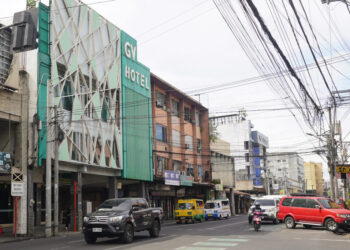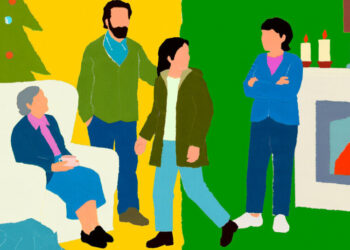Cross-country storms are expected to batter much of the U.S. this week, potentially disrupting holiday travel for millions of people.
Rain is expected to fall across the Midwest, Southeast, and East Coast today, while snow is forecast for parts of Michigan, Wisconsin, Ohio, Pennsylvania, and New York this week. Wind gusts could reach 20 to 30 mph on Thursday in New York City—threatening the city’s famed parade.
[time-brightcove not-tgx=”true”]
Thanksgiving is one of the biggest travel days of the year. AAA projects that overall, 81.8 million people will travel 50 miles or more during the Thanksgiving holiday period. But the rough weather should come as no surprise to most travelers. “As we get into late November, that’s kind of when we start to really experience those first bouts of really cold weather,” says Allison Finch, lead meteorologist for the New York State Weather Risk Communication Center.
Read more: Will Flights Be Disrupted Over Thanksgiving? What to Know About Travel Over the Holidays
Historic Thanksgiving storms
The busy holiday period combined with the changing seasons often threatens chaos on the roads and at airports. And over the years, Thanksgiving has seen some memorable storms.
Several cities in the Northeast saw near record-breaking cold temperatures on Thanksgiving Day in 2018, with temperatures dropping to 19°F that morning in New York City—making it the second-coldest Thanksgiving in the city’s history. Thousands, though, wrapped themselves in metallic foil blankets and sleeping bags on the sidewalk to watch the parade pass through the streets to watch the Macy’s Thanksgiving Day Parade.
The next year, a bomb cyclone—a large storm that rapidly strengthens over a 24 hour period—brought rain, snow, and hail to the West Coast, disrupting travel in Los Angeles as water flooded the roads.
The Macy’s Thanksgiving Day Parade, which has not been cancelled since 1944 for any reason, has even been impacted by harsh winter weather. In 1997, 43 mph winds wreaked havoc on the parade, and two people were injured after a Cat-in-the-Hat balloon broke the metal arm off a lamppost. The debacle led New York City officials to declare that it will ground the balloons if winds reach 23 mph—but that has yet to happen since.
Natural disasters have also made headlines on the holiday. In 1950, an extratropical cyclone impacted 22 states around the holiday week, as significant winds, heavy rain, and blizzard conditions killed 353 and injured 160. On Thanksgiving week in 1992, one of the largest November tornado outbreaks in U.S. history occurred over the course of three days, when severe weather spawned around 100 tornadoes everywhere from Texas to Virginia, Indiana, Ohio, and Kentucky.
How climate change is impacting Thanksgiving weather
Though it might not feel like it, erratic and intense November storms are being made more likely by rising global temperatures, according to Climate Central. Over 225 cities in the U.S. have seen November temperatures rise since 1970—by 2.4°F on average. It could impact Thanksgiving weather trends—increasing the amount of winter precipitation as the warmer atmosphere is able to carry more moisture.
This increases the likelihood for significant snowfall from lake effect snow, which occurs when warmer temperatures prevent the lakes from freezing over, causing the warmer water to evaporate into passing cold fronts and fall down as snow. Parts of the Midwest and Great Lakes region are expected to see lake effect snow this week.
“With warmer temperatures from climate change, you’re going to have a warmer November or warmer fall altogether,” says Finch. “And as we get into the later kind of time period in November, if you have warmer lake temperatures, and then you get this burst of intense cold air, that’s going to make the lake effect events a lot more significant when they happen.”
Early research shows that the warmer temperatures are also impacting the polar vortex, a large area of low pressure and cold air that surrounds both of the Earth’s poles. That could make severe winter weather events in some areas more likely—and cause temperatures to fluctuate.
“The research is hinting that as climate change continues, it’s leading to more frequent disruptions, which could lead to more cold air intrusion,” says Finch. “So if you have a disruption in the polar vortex that sends that cold polar air further south into the United States, places like Texas get a really cold freeze or Florida, where people go to stay warm, they all of a sudden are really cold.”
The post The History—and Future—of Thanksgiving Storms appeared first on TIME.




